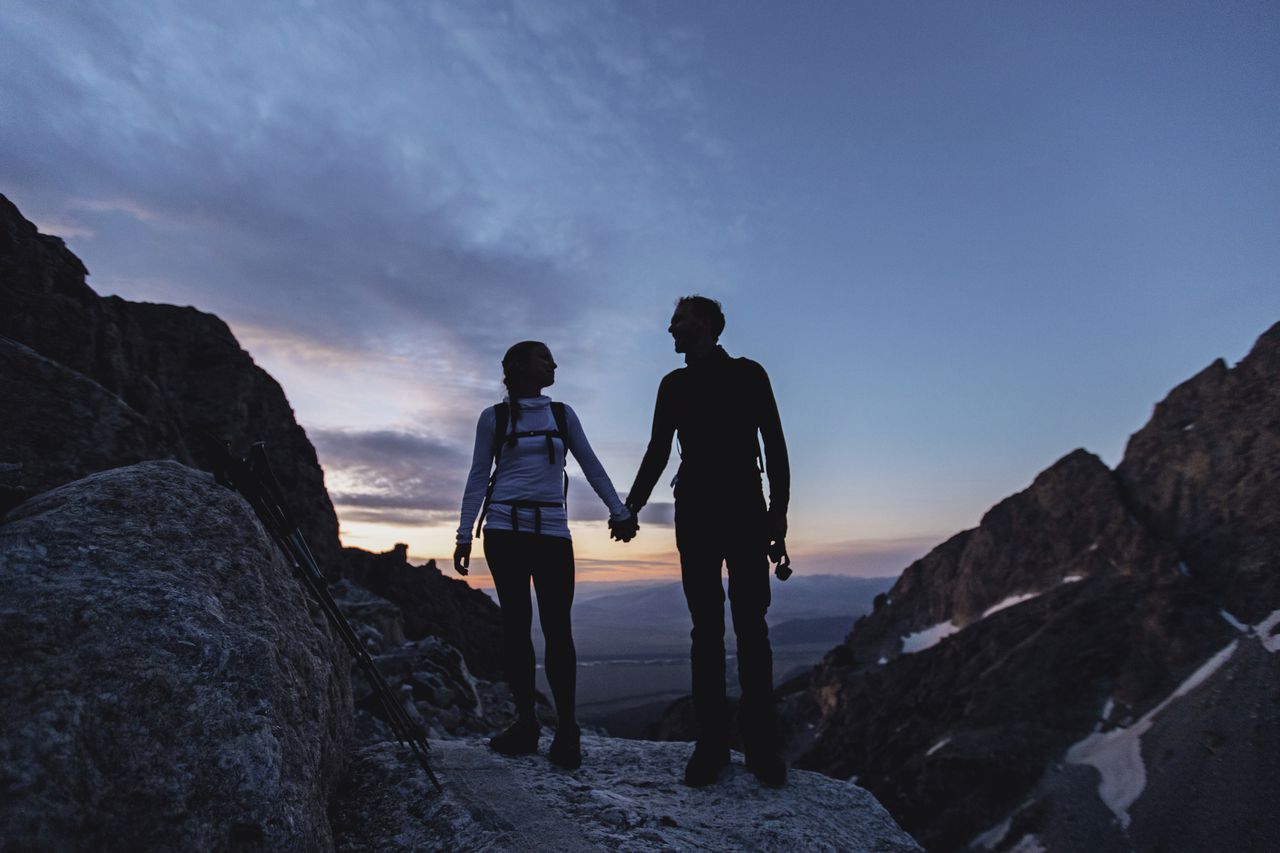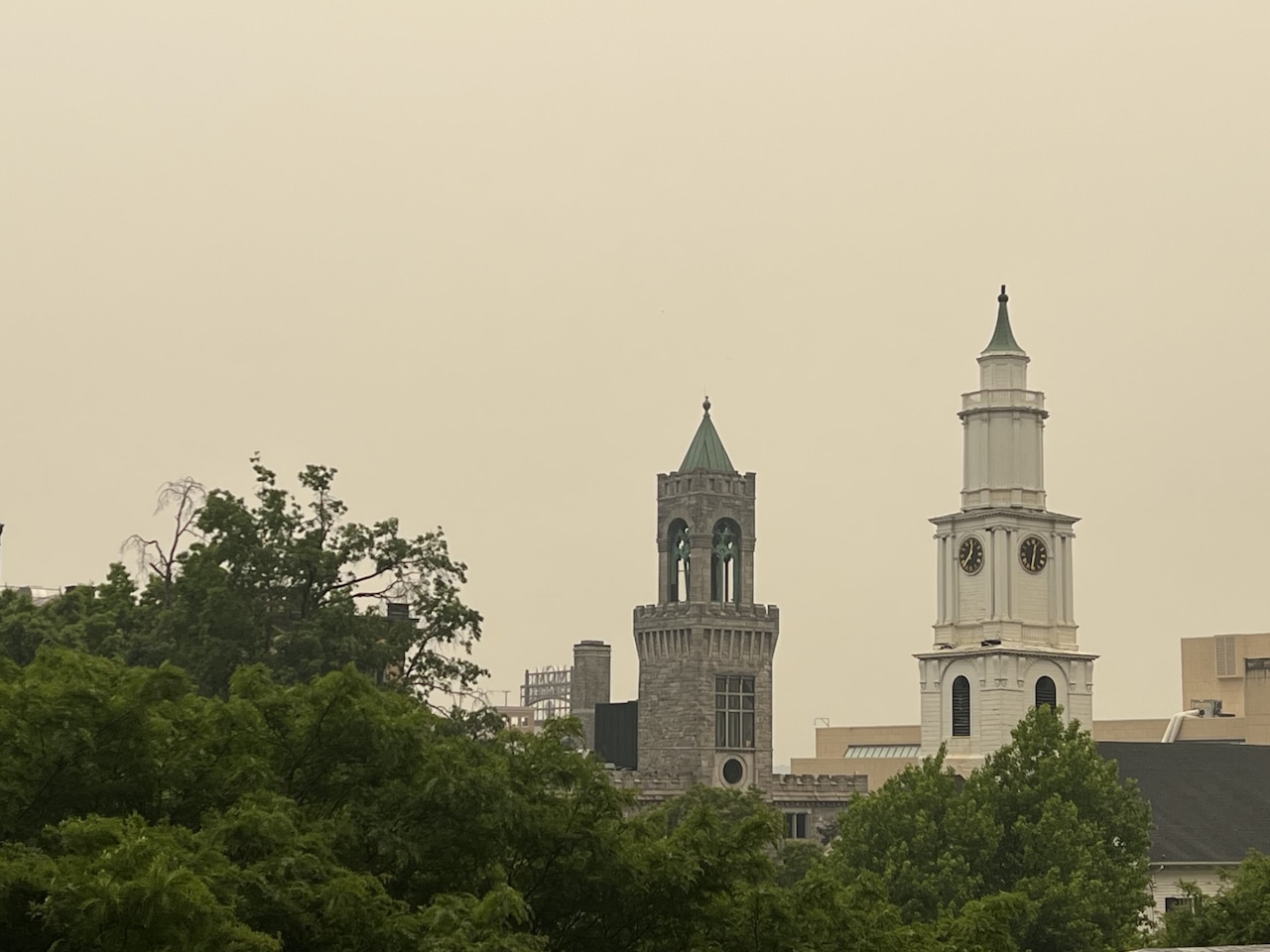
Among the great compendium of things related to changing climate, such as droughts, floods, hurricanes, wildfires, and heatwaves – and what that means for people – mountains aren’t usually at the top of the list.
And even today, on National Mountain Climbing Day, nature’s biggest structures are probably not at the forefront of your mind.
After all, they’re mountains. What could climate change possibly do to a mountain range formed 80 million to 55 million years ago – just like the Rocky Mountains did?
As it turns out, mountains play a crucial environmental role that is felt far beyond their slopes. They are home to glaciers and snowpacks, and those are disappearing fast.
Mountains provide water
Increased global temperatures are melting glaciers at alarming rates and not allowing as much snowpack to form. If that continues, it will contribute to rising sea levels and disrupt drinking water supplies. And if you don’t think glaciers and snowpacks are essential, look at the Himalayas, where 2 billion people rely on them for drinking water.
In California, around 30% of the state’s freshwater needs come from snowpack. While California’s snowpack doubled last year, an anomaly in recent years, a slight increase in temperature could turn that snow into rain, which will come with a whole bunch of issues.
For every 1-degree Celsius rise in global temperatures, scientists anticipate an average increase of 15% in rainfall at higher elevations. That means less snow collecting over the winter and providing water through warmer months. The snowpack and glaciers are basically a piggy bank that saves fresh water for drier periods.
You might wonder, won’t we get the same amount of fresh water through the rain anyway? No, because, as we found out with the atmospheric rivers in late 2022 and early 2023, western states don’t have many storage solutions for that amount of water. When it comes in intense periods of rainfall, it flows out to sea before we can save it. The glaciers and snowpacks are supposed to store it for us.
Climate change can also alter the types of vegetation that can thrive on mountains, causing extinctions or species migrations. Increased weather volatility can result in flash flooding, mudslides, and landslides on the mountains and those who live in the valleys and plains below.
That can cause havoc to mountain climbers.
And the mountains at the greatest risk are right here in the United States.
“We think that North American Pacific mountain ranges are more susceptible to the risk of rainfall extremes than other mountain ranges because a significant portion of snowfall in this region typically occurs at temperatures just below zero degrees Celsius,” said Mohammed Ombadi, author of a study about the issue published Nature in late June 2023. “The slightest change in air temperature will shift this snowfall to rainfall. Unlike other mountain ranges, snowfall may occur at very low temperatures below zero degrees.”
In addition, thawing permafrost in the Rockies and other high-elevation areas releases methane, contributing to more greenhouse gases globally. The changes disrupt water supply, agriculture, and tourism in mountain communities, cause soil erosion, and in some places, have profound cultural implications for indigenous people.
And over time, as the rocks are subject to extreme heat and cold, they can fracture and become weak, increasing the risk of rock falls. Not great for climbers or the 25 million Americans that live in mountainous regions.
Gone in our lifetimes
The Rocky Mountains have about 100 glaciers covering 10,000 acres, including Glacier National Park. The freshwater from those glaciers, much like snowpack, flows down to streams and lakes, which provide drinking water and allow particular habitats to thrive. By 2080, however, Glacier National Park may well have to be renamed if it loses all its ice sheets, as studies suggest.
The mountain ranges most at risk include the North American Pacific ranges, such as the Cascades, and Sierra Nevada, and coastal ranges.
While mountains aren’t going anywhere soon, the big solution to their problems isn’t anything we mere mortals can summon. In reality, it must come at the highest levels of global cooperation. It’s hoped that targets in the Paris Agreement, a binding international treaty on climate change, will keep global warming to less than two degrees Celsius above pre-industrial levels.
However, mountains are beautiful places and there’s a lot you can do to keep them pristine and safe:
1. Follow the “Leave No Trace” rules: stick to trails and take away all litter to protect against soil erosion, harming vegetation, and pollution.
2. Don’t get the water dirty: use biodegradable soap away from streams and lakes to ensure clean water for us and wildlife.
3. Respect wildlife: observe animals from a distance and avoid feeding them.
4. Reduce your carbon footprint: travel to the mountains by biking, carpooling, or using public transportation to mitigate climate change’s effects on these giant ecosystems.
5. Respect cultural sites and participate in conservation: understand the cultural significance of mountain areas and join local conservation groups to protect them.
6. Choose sustainable gear and responsible tourism: opt for clothing and equipment from companies that adhere to environmentally friendly practices. Plan trips with guides or companies that also respect the environment.
7. Avoid unnecessary fires and control your pets: use portable stoves and keep pets on a leash to preserve the local environment.
8. Monitor weather and minimize off-road driving: respect weather conditions to avoid risks and stick to designated roads to prevent landscape damage.
9. Educate yourself and others: learn about the local environment and share responsible behavior tips with fellow adventurers.






